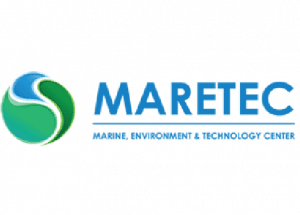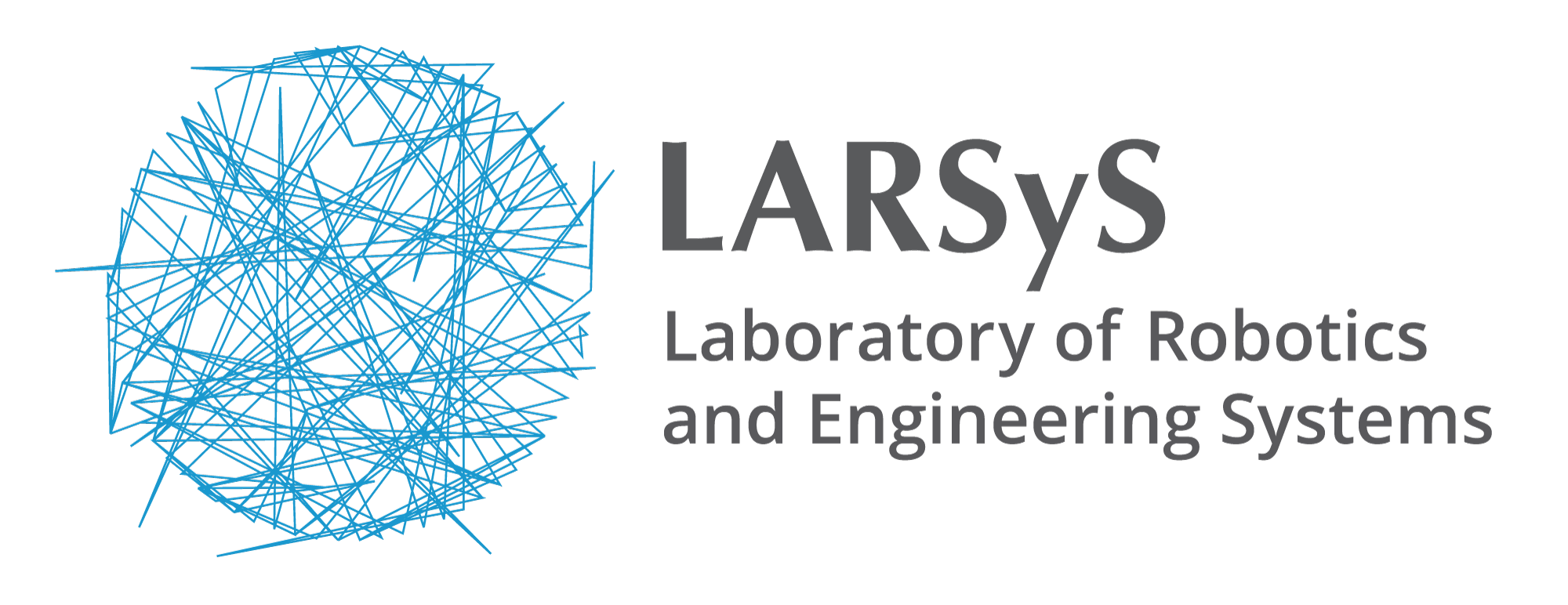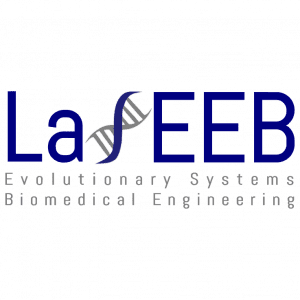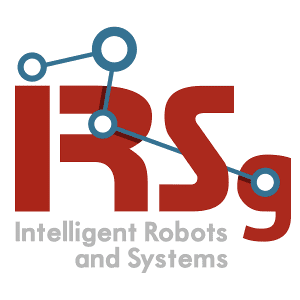The Laboratory of Robotics and Engineering Systems (LARSyS) is currently organized into 14 research groups.
We conduct research in computer and robot vision, focusing on video analysis, surveillance, machine learning, humanoid robotics and cognition. Our mission is twofold: (i) develop new methodologies and tools for computer and robot vision and (ii) demonstrate their effectiveness in challenging applications.
We embrace a multidisciplinary approach, bridging engineering, neuroscience and psychology, to design bio-inspired artificial systems, and to model biological systems with computational and robotic tools.
The core of our research lies on computer vision, robotics, and machine learning, with a focus on understanding human activities and scenes. Specifically, we address:
-Visual navigation & calibration: integrate advanced sensing -e.g. foveal & omnidirectional vision, discrete event cameras, visual attention- with robust computer vision algorithms, to enhance the visual perception and self-calibration skills of humanoids, mobile robots, and drones.
-Bio-inspired systems & models: develop robots and computational models to better understand body control, sensorimotor coordination and manipulation in animals, offering a novel perspective on the integration of sensory inputs and motor actions in autonomous robots.
-Cognitive Robots, learning & HRI/HCI: develop models of non-verbal communication and interaction between humans, and integrate them in advanced robots such as humanoids, to enable them to understand and anticipate human actions and interact smoothly with humans.
Our research focuses on doctoral training (16 PhD graduates in the last 5 years) in collaboration with top universities and global companies, including joint degrees and research residences. International project involvement remains a key objective in the future.
We will further develop the RBCog-Lab, part of the Portuguese Roadmap of Research Infrastructures, with its unique portfolio of advanced testbeds, for data acquisition and testing, and home to the only iCub humanoid in Portugal.
 SIPG research topics include convex and nonconvex optimization, distributed optimization, localization, acoustic signal processing, medical imaging, computer vision and big data processing. The key topics to research are the following:
SIPG research topics include convex and nonconvex optimization, distributed optimization, localization, acoustic signal processing, medical imaging, computer vision and big data processing. The key topics to research are the following:
- Distributed learning: focused on designing fast distributed algorithms that enable multiple agents, each with their private dataset, to learn a model that encompasses all the available data. Methods and problems arise depending on how data is partitioned among the agents: 1)vertical setups, 2)federated learning and 3) token-based methods. One final problem that intersects many applications is the presence of “bad data”, a vulnerability of current collaborative learning systems calling for a new robust inference toolbox for distributed learning.
- Medical Imaging: Accomplishments range from segmenting anatomical structures to finding saliency regions for disease localization, or even survival time prediction. Current limitations stem from data extracted from a confined clinical site, not accounting for population diversity. Leveraging a recently approved project, our ambition is to devise hybrid algorithms for geo-dispersed clinical sites that combine image data with population information (age, ethnicity) in a distributed setting to comply with privacy rules. The focus will be on breast cancer.
- Assistive technologies/Smart infrastructure: Following up on the award-winning project Feedbot, we will strive to develop high-precision occlusion-resistant object detectors. Leveraging SIPG’s successful history on missing data estimation we will develop methods for head and body pose in a self-occluding (feeding) scenario as well as in highly crowded settings. These tools are key in retail automation in which SIPG has strong ties with industries https://smartretail.tecnico.ulisboa.pt As always, the bulk of research is carried out in national and international PhDs like the Carnegie Mellon Portugal program, where SIPG has a long tradition involving 17 PhDs.
The Evolutionary Systems and Biomedical Engineering group (LaSEEB) focuses on interdisciplinary research in biomedical systems and engineering, taking an interdisciplinary approach integrating concepts from engineering, neuroscience, computer science, physics, and biology. The lab specializes in biomedical imaging, including techniques such as cell microscopy and magnetic resonance imaging (MRI), and physiological signals such as the electroencephalogram (EEG) and the electrocardiogram.
In biomedical data processing, the lab will pursue two research lines: i) applying AI image processing to cell microscopy for understanding cell invasion and cytoskeleton organization in Cancer; ii) building models for psychiatric pathology diagnosis and follow-up using physiological and behavioural patient data.
MRI-related research includes: i) developing acquisition strategies using open-source tools for quantitative MRI (diffusion and MR relaxometry); ii) creating AI reconstruction models for producing quantitative parametric maps from raw MRI data; iii) quantitative MRI of cerebrovascular physiology; iv) building AI models using advanced MRI techniques for glioma diagnosis and post-treatment follow-up; v) a medium-term goal is to enhance hardware access by constructing a low-field open-source MRI scanner (https://github.com/mri4all), leveraging LARSyS in-house expertise in electronic engineering.
Research in Neuromodulation, Neurofeedback, and Brain-Computer Interfaces aims to enhance the lives of individuals with mobility challenges post-stroke or other neurological disorders. Combining computer and neuro-engineering, the focus is: i) developing tools for improving human-electrophysiology-to-technology interfaces; ii) utilizing non-invasive imaging (EEG, fMRI) to understand brain activity during recovery. The goal is to optimize personalized interfaces through human-AI synergy, promising to restore motor functions and enhance human capabilities, such as restorative neurorobotics.
The Intelligent Robots and Systems group (IRSg) undertakes research and development in several fields, with a particular focus on robot systems. Its members adopt a comprehensive approach to the study of complex systems, viewing them as a whole rather than focusing on their individual subsystems. This holistic perspective led to the exploration of research topics such as task planning, robot system benchmarking, multi-robot cooperation, and human-robot interaction.
IRSg historical background has steered the group towards utilizing Artificial Intelligence (AI) concepts, including Machine Learning (ML), rooted in formal approaches from Systems and Control Theory, and Computer Science. These days, we are known as an AI and Robotics group.
There is a deep-seated commitment to continue applying these methodologies to either real-world or realistic lab settings. This dedication stems from the belief that challenging real-life problems provide richer sources of inspiration.
 The main thrust of DSOR’s research and development activities in the areas of dynamical systems theory and ocean/aerial robotics is twofold:
The main thrust of DSOR’s research and development activities in the areas of dynamical systems theory and ocean/aerial robotics is twofold:
- to study challenging theoretical problems in the areas of Networked Cyber-Physical Systems, Aerial and Marine Robotics, Metamorphic Robotic Systems, and Optimization and Machine Learning for Decision Making aimed at devising innovative methodologies for single and multiple autonomous agents real-time motion planning, sensor-based control, and cooperative navigation systems for autonomous air and marine vehicles;
- to exploit the developed theoretical methodologies and to transition from the laboratory to the real world using in-house developed vehicles and systems as a means to contribute to the development of cost-effective and far more efficient tools than those available today for environment exploration and monitoring, assessment of living and non-living resources, and critical infrastructures monitoring.
LTCES-IN+ addresses the fundamentals of concurrent thermodynamic processes in the development of mathematical/physical models to rationalize energy conversion systems. Research builds on renowned skills of the team in experimental thermo-fluid-dynamics and has been directed to efficient burning of low calorific fuels and enhancing interfacial transport. The former aims to devise efficient and low-cost co-digestion methods to maximize the energy potential of wastes, such as biogas for sustainable energy needs; the second considers engineered materials, surfaces and fluids to customize wetting and thermal properties for optimum performance in energy applications. Engineered surfaces are combined with active methods of wettability control to handle micro amounts of biofluids in clinical diagnostics devices. Future advances tackle the benefits of microfluidics for biomedical applications.
The holistic approach combines low-cost manufacturing techniques to design multiscale energy devices: e.g. portable power generation systems based on integrated catalytic micro-combustion able to overcome the range of batteries –engineered surfaces enhance surface catalytic reactions; metal oxide foams to capture CO2/O2 to in situ filtering fuels and/or capture emitted CO2; multi-micro-channel heat sinks are studied to be embedded in PV cells to increase the efficiency of high concentration photovoltaic systems and recover heat in a cogeneration configuration. H2 green production and storage are also crucial to solving the complex challenges associated with energy transition. Several approaches will be explored, e.g. integrating H2 compression systems with renewable energy sources and processing of H2 and waste oils into e-fuels.
 The LIES-IN+ is an international reference in the design of sustainable systems across multiple scales (national, regional and urban) with the objective of enhancing the productivity of natural resources and promoting climate neutral strategies. LIES-IN+ develops methodologies, technologies and policies aimed at the characterization, modelling and optimization of natural resources’ productivity.
The LIES-IN+ is an international reference in the design of sustainable systems across multiple scales (national, regional and urban) with the objective of enhancing the productivity of natural resources and promoting climate neutral strategies. LIES-IN+ develops methodologies, technologies and policies aimed at the characterization, modelling and optimization of natural resources’ productivity.
The following activities will be developed to contribute to the following objectives:
- Urban Decarbonization: Develop digital twins to integrate data across urban sectors like the built environment, mobility and energy, driving resource efficiency, and supporting decarbonization strategies, with the possibility of including predictive surrogate models to building simulations.
- Circular Economy: Evaluate circular economy strategies in urban planning and building management, aiming for a sustainable transformation that significantly reduces carbon emissions and enhances urban metabolism.
- Energy Independence: Develop sophisticated energy models to support decentralized renewable energy systems, especially in isolated settings (e.g. islands or energy communities), facilitating their transition to carbon neutrality.
- Low-Carbon Transport Systems: Develop new assessment frameworks to refine the accuracy of emissions and energy consumption data in the transport sector, promoting cleaner transportation technologies.
- Socioeconomic Metabolism Analysis: Enhance the understanding of socioeconomic metabolism to provide a more detailed analysis of the impacts of economic activities, supporting informed policy-making for sustainable development.
LIES-IN+ approach is to foster collaborative, climate-neutral urban developments through innovative methodologies, informed policymaking based on a comprehensive understanding of urban systems and the integration of advanced simulations for sustainability assessments.
 LTMP-IN+ envisages policy analyses in terms of the increasing relevant socioeconomic challenges, as follows:
LTMP-IN+ envisages policy analyses in terms of the increasing relevant socioeconomic challenges, as follows:
- Firm creation and development: Understanding the intrinsic mechanisms of how entrepreneurial human capital can be transferred to firm-level environments. Our goal has been to sketch a comprehensive picture of the typical entrepreneur leaving entrepreneurship for a career as a wage employee and the firms that are the source and recipient of this specific human capital.
- Collaborative innovation to foster Industrial dynamics: Policy analysis of Collaboratives Laboratories as autonomous institutions able to internalize good-jobs externalities in their choices, either in terms of labour practices or technology and social investments. The research analysis considers collaborative innovation as a “cultural movement” involving institutional innovations to address processes of stimulating generational change. It considers public and semi-public goods promoted by institutional arrangements oriented to innovation-based growth and it facilitates the diversification in a global system of increasing fragmented production, considering flows of global-local knowledge. Finally, this research is associated with “mission-based” programs of international relevance and local impact.
- Science and Technology Policy: Our ability to respond creatively to challenges, human and environmental, for the Global South imposes new transdisciplinary knowledge to foster Human Agency and a cultural movement based on collaborative and trans-disciplinary innovation.
- Space policy: Policy research has focused on the development of new markets for high- and very high-resolution satellite imagery using advanced information systems fed by image data analysis, including the use of methods of Artificial Intelligence. The emphasis is on public and semi-public markets and in collaboration with public and private organizations worldwide, making use of collaborative arrangements with third parties.
 The Creative Technologies Interdisciplinary Collective (CTC) explores the intersection of technology, art, and humanities through posthuman and relational ontologies lenses, speculative fabulations, digital interactive storytelling and games, and multimedia interactive art. CTC pushes the boundaries of digital expression and societal impact by applying post-human approaches to socio-technology studies of advanced technologies and creative practices. Through this lens, CTC evolves the relationship between humans and technology by tackling themes such as identity and gender, nature as culture, and inclusion and cohesion of marginalized groups, aiming to contribute to a more inclusive and equitable technological future.
The Creative Technologies Interdisciplinary Collective (CTC) explores the intersection of technology, art, and humanities through posthuman and relational ontologies lenses, speculative fabulations, digital interactive storytelling and games, and multimedia interactive art. CTC pushes the boundaries of digital expression and societal impact by applying post-human approaches to socio-technology studies of advanced technologies and creative practices. Through this lens, CTC evolves the relationship between humans and technology by tackling themes such as identity and gender, nature as culture, and inclusion and cohesion of marginalized groups, aiming to contribute to a more inclusive and equitable technological future.















MARETEC modelling is based on process-oriented primitive equations. It builds on fluid mechanics, mass transfer, and computational methods to solve water flow and transport in aquatic and terrestrial ecosystems. The research follows an interdisciplinary and interinstitutional strategy where physics (fluid mechanics, transport processes and computational methods) are the key contribution of MARETEC to a wide research group including all disciplines relevant for environmental modelling and management, including sedimentology, geochemistry, biology, ecology, agronomy and petrochemistry 


Based on the application of fundamental principles from thermodynamics to ecological and economic systems, in the approach of mathematical and computational modeling, research at TEELab has the following action lines, covering fully the research to application spectrum:
- Metabolism of Organisms: A global leader on the development and application of Dynamic Energy Budget theory, the only available theory for the metabolism of all organisms on Earth.
- Metabolism of Economies: Development and empirical testing of theories for the metabolism of economies, explaining major puzzles in mainstream economic theory.
- Sustainability Assessment: A broadly integrative approach to sustainability assessment of countries, regions, and products, with particular expertise on water, soil, climate, and biodiversity & ecosystem services, and in life cycle assessment, input-output analysis, economic valuation, multi-criteria analysis and public participation.
- Grazing for Sustainability: Work with the 1000-farmer, 0.5 million hectare Terraprima network, developing sustainable industry 4.0 solutions for pastures and grazing animals.
TEELab works closely with its spin-off ecosystem (Terraprima, Atthis, VirtuaCrop), ensuring efficient knowledge transfer, practical relevance of its research, training and employment opportunities for its M.Sc. and Ph.D. students. 






